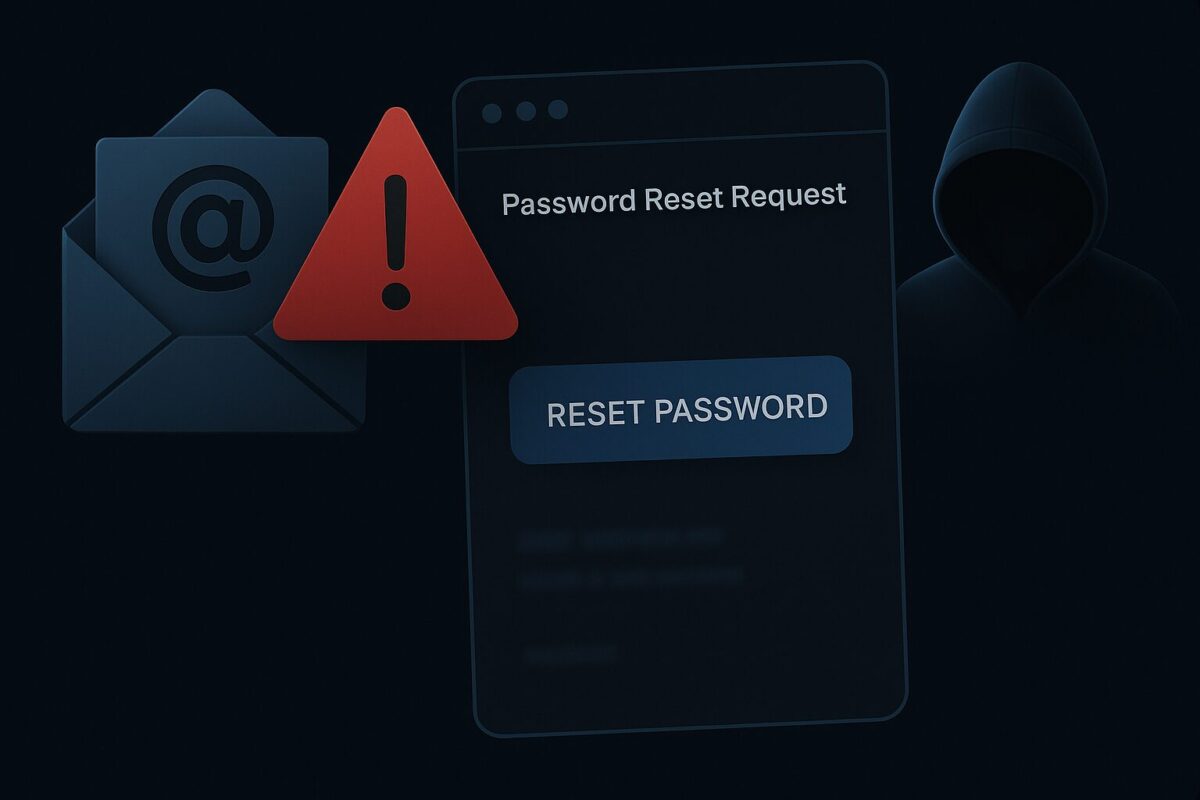
How Hackers Exploit Password Reset in 2025: Tactics, Real Cases, and How to Protect Yourself
One button. One email. One careless click — and everything: your data, money, accounts — is in someone else’s hands.
The email you didn’t expect — but that could change everything
It’s a familiar situation: you open your inbox and see a “Password reset request.” But you didn’t ask for one. Still, it’s there.
Sometimes these emails are legit. But not always. Sometimes, they’re a hacker’s first knock at the door — testing how you’ll respond.
This isn’t a glitch. It might be an attack. And the worst part — it only needs one thing from you: inattention.
In today’s digital ecosystem, the password reset function has become one of the most underestimated attack vectors. Through it, attackers can:
- launch phishing attempts
- bypass 2FA mechanisms
- impersonate users via support lines
- gain full account access
Three common tactics using password reset as a weapon
1. Phishing 2.0 — nearly identical to real emails
In 2023–2024, hackers perfected their mimicry. Fake password reset emails now closely imitate real ones from Gmail, Facebook, Apple, or even local banks.
Telling the difference without technical expertise? Nearly impossible.
👉 The link redirects to a fake login page. You enter your data. Done. Breach successful.
According to BECU.org, phishing campaigns disguised as password reset emails were the most common attack method in 2023 — with over 1.5 million attempts in the U.S. alone.
2. Tech support as the entry point: social engineering in action
This attack doesn’t require malware — just a convincing phone call.
The hacker contacts your provider’s support team — your bank, your mobile carrier — and pretends to be you. They have your name, email, maybe even your address. Their story is urgent: lost phone, locked account, need a reset.
If the support agent skips proper verification, the attacker gains control in minutes.
In 2024, this exact method led to breaches at Marks & Spencer and Co-op in the UK. No code — just manipulation.
3. Password Reset Poisoning — a new threat for websites
This one’s technical. It exploits how servers handle HTTP headers.
If a website fails to properly validate them, a hacker can:
- change the email address where the reset link goes;
- swap the domain inside the email to a phishing one;
- hijack the account — no password needed.
PortSwigger Web Security lists this among the top 10 critical authentication vulnerabilities.
Why email is your most vulnerable asset
Imagine you lose access to your inbox. What happens?
- Your social media gets hijacked (via “forgot password”)
- Your bank and online shopping access is at risk
- Your SIM card can be reset via email verification
- Personal documents may be leaked
That’s why email is your digital passport. And it should be protected like your ID or credit card.
If you’re not using 2FA — you’re exposed. No exaggeration.
Revelant
What to do if you receive a suspicious password reset email
Scenario: an unexpected reset request hits your inbox. What now?
- Don’t click anything. Not even “cancel” or “ignore” — it could be spoofed.
- Access the service manually through its official website.
- Check recent activity: logins, connected devices.
- Change your password — even if everything looks normal.
- Enable two-factor authentication (2FA).
- Check if your email was leaked: https://haveibeenpwned.com
Build protection through habits, not just tools
Cybersecurity isn’t just about tech. It’s about digital hygiene:
- Use unique passwords for every account.
- A password manager is a must in 2025.
- Your email account should be fortress-level secure: 2FA, backup recovery methods, and access logs.
- Educate others. Parents. Kids. Colleagues. Because attackers often target those who don’t understand how the system works.
Cyberattacks often begin with the ordinary
The most dangerous threats come in familiar packaging. A password reset? It feels routine. That’s what makes it effective.
Password resets aren’t just a feature. They reflect how alert we are in the digital world.
You can’t control when someone targets you. But you can control how you respond. And that can make all the difference.














